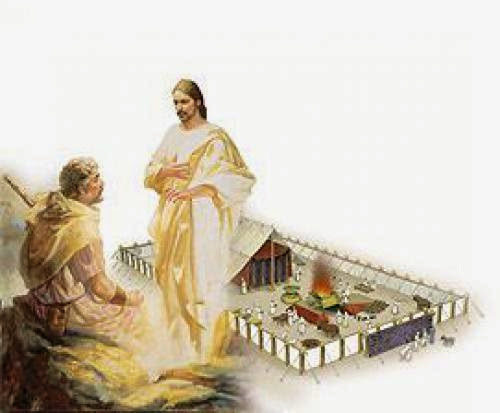
Hanson talked about the prophecies in the Book of Revelation, noting that it was written in Greek, yet he believes that it was a translation from an earlier Hebrew or Aramaic text from the 1st century. The early believers in Jesus thought they were living in 'End Times' as they were facing down the Roman Empire, and Revelation directly spoke to them, he commented. In the year 66 AD, Jews sought their freedom from Rome and revolted, and many of the calamities described in Revelation relate to the Roman's brutal attack on Israel, which was also described by the historian Josephus.
While the Vatican has said that a recent discovery of a 4th century papyrus that refers to Jesus' wife is a forgery, Hanson noted that Carbon 14 dating and other testing has yet to be done on the fragment, and it's possible that it is authentic. The genuineness of the James Ossuary, an ancient burial box, with an Aramaic inscription, translated as "James, son of Joseph, brother of Jesus," is still being debated some 10 years after the discovery was announced, he added. For more, check out Hanson's video Jesus' Lost Heirs, a companion to his book, Blood Kin of Jesus.
Biography:
Dr. Ken Hanson is a dynamic author, lecturer, and founder of "Treasures in Time," an organization devoted to disseminating knowledge of the Biblical and classical world. He has dug on archaeological sites in the Middle East, lived in a politically volatile region of northern Galilee, and taught Hebrew on an Israeli agricultural settlement. He has also worked with a television news-gathering operation in a war zone in southern Lebanon, at the height of the civil war that left the jewel of the Mediterranean in ruins.
Wikipedia
The book spans three literary genres: epistolary, apocalyptic, and prophetic. It begins with an epistolary address to the reader followed by an apocalyptic description of a complex series of events derived from prophetic visions which the author claims to have seen. These include the appearance of a number of figures and images which have become important in Christian eschatology, such as the Whore of Babylon and the Beast, and culminate in the Second Coming of Jesus Christ. The obscure and extravagant imagery has led to a wide variety of interpretations: historicist interpretations see in Revelation a broad view of history; preterist interpretations treat Revelation as mostly referring to the events of the apostolic era (1st century), or--at the latest--the fall of the Roman Empire; futurists believe that Revelation describes future events; and idealist or symbolic interpretations consider that Revelation does not refer to actual people or events, but is an allegory of the spiritual path and the ongoing struggle between good and evil.
The Book of Revelation is the only apocalyptic document in the New Testament canon, though there are short apocalyptic passages in various places in the Gospels and the Epistles.
Using the Greek Septuagint, John makes 348 allusions, or indirect quotes, from 24 of the canonized books of the Hebrew Bible, predominantly from Isaiah, Ezekiel, Daniel and Psalms. The narrative of the terrifying and boastful beast that rises out of the ocean, has many horns which represent kings, and which is thrown into the fire, derives from Daniel 7. The beast from the Book of Revelation combines body traits from all four beasts mentioned in Daniel 7. The description of the angel who gives the revelation derives from Daniel 10:5-6; the four horsemen derive from Zechariah







